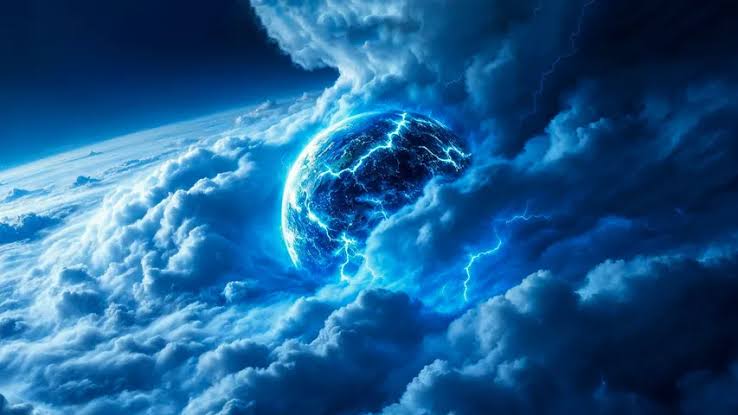Int'l Correspondent
Published:2025-05-03 07:27:50 BdST
Monstrous cloud detected floating near Earth at edge of huge 'cavity'
Scientists have detected a dark cloud right next door to Earth, which has somehow managed to evade sight before. Our Sun resides in a gigantic structure known as the Local Bubble. The cloud of molecular gas called Eos is right on the edge of this structure.
Molecular clouds exist throughout the universe, with several of them residing in the Milky Way as well. They are composed mostly of hydrogen gas and dust.
A team of researchers announced the discovery on April 27, 2025. The discovery was published in Nature Astronomy on April 28, 2025.
Eos is only 300 light-years away, which makes it the closest cloud ever seen near our solar system. It is also one of the largest single structures ever seen in space.
Eos is humongous in size, about 3,400 times more massive than the sun. It is all gas, and yet monstrous.
Researchers say that if we could look at it from Earth, it would be equal to seeing 40 full moons across the sky.
The cloud is shaped like a crescent and is hovering on the edge of the huge “cavity” called the Local Bubble. However, it won't last forever and will dissipate in the next six million years.
How was the cloud detected?
Molecular clouds are made up of hydrogen, which glows in ultraviolet light. Scientists used a far-ultraviolet spectrograph (FIMS-SPEAR) on the Korean satellite STSAT-1 to look for ultraviolet emission of molecular hydrogen. Study authors say the cloud is "literally glowing in the dark".
"This is the first-ever molecular cloud discovered by looking for far-ultraviolet emission of molecular hydrogen directly. The data showed glowing hydrogen molecules detected via fluorescence in the far ultraviolet," lead author Blakesley Burkhart, in the Department of Physics and Astronomy in the Rutgers School of Arts and Sciences in New Jersey, said.
"This cloud is literally glowing in the dark. It was kind of like just waiting to be explored. This opens up new possibilities for studying the molecular universe."
The researchers say it wasn't seen till now because it has very little hydrogen, making it a "dark" cloud.
Cloud will let scientists see stars and planets
Scientists are intrigued by the cloud as they now have the opportunity to see stars and planets form. These clouds are the gaseous space between stars. They have the raw materials that contribute to the birth of new stars and planets.
"When we look through our telescopes, we catch whole solar systems in the act of forming, but we don’t know in detail how that happens. Our discovery of Eos is exciting because we can now directly measure how molecular clouds are forming and dissociating, and how a galaxy begins to transform interstellar gas and dust into stars and planets," Burkhart added.
The hydrogen in the cloud has covered a journey of 13.6 billion years since it existed from the time of the Big Bang.
Unauthorized use or reproduction of The Finance Today content for commercial purposes is strictly prohibited.


